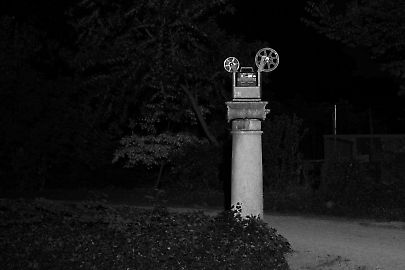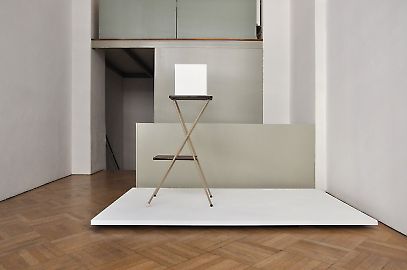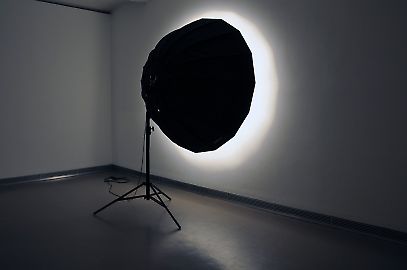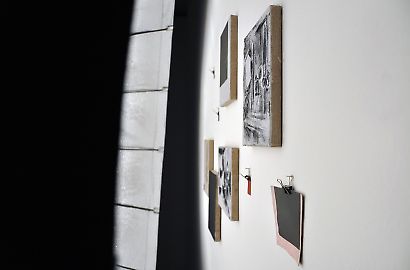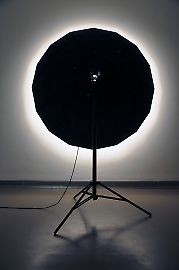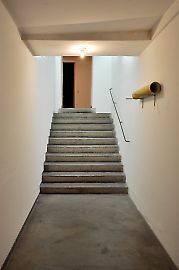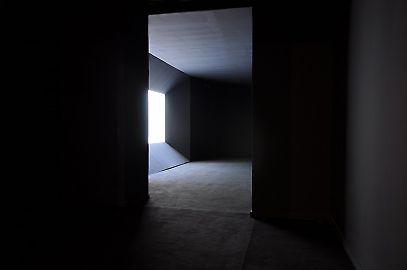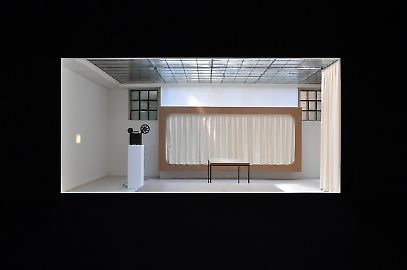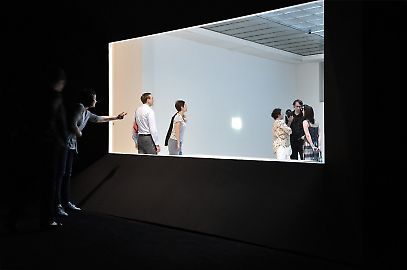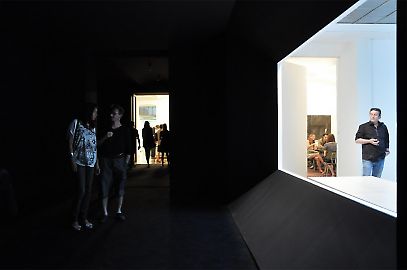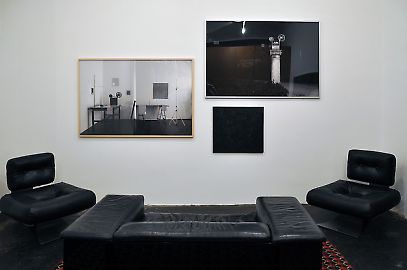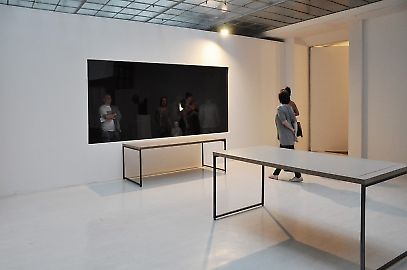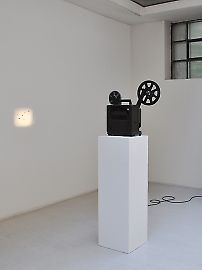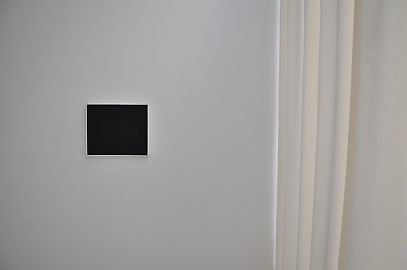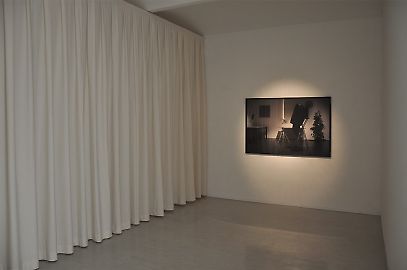David Maljkovic -- Temporary Projections
Georg Kargl Fine Arts presents Temporary Projections, the second solo show of the Croatian artist David Maljkovic, and his first one in the main space of the gallery.
In his installations, videos, and collages, David Maljkovic (born in 1973) is concerned with aspects of the eventful history of his country. The far-reaching consequences of the transformation from a communist to a capitalist social system and the linked economic and cultural impacts form the subtext of his artistic production.
Exploring the modernist remnants of socialist Yugoslavia and their echoes to the present as well as their future possibilities is one of the main themes in his artistic practice. In recalling the ideas of the past, analyzing their impact on the presence, transforming them into sites of an utopian alternative future, he achieves a shifting between different time levels.
With his current exhibition at Georg Kargl Fine Arts David Maljkovic has undertaken an experimental journey through the broad and complex space of the gallery. Through a massive architectural intervention the gallery is divided into a public and a private space, an exposed and a hidden part. With Temporary Projections David Maljkovic creates an atmospherically charged overall installation.
Fiona Liewehr has interviewed David Maljkovic about his artistic practice, his motivations and the specific challenge of the gallery space.
FL: My impression is that Temporary Projections is a very special exhibition for you. You’ve started painting again, and at first glance your works have nothing to do with one of the main subjects of your artistic practice: investigating the history of your own country, questioning the impact of modernist conceptions from socialist Yugoslavia on the present and for an alternative future. Is there a link? Are you striking a new path or even starting a new chapter of your work?
DM: Temporary Projections refers to my 16mm film Images With Their Own Shadows from 2008. It deals not so much with the content of the film, but rather with its underlying principle. This film was shot at the former villa of Vjenceslav Richter (1917-2002), a founding member of the group EXAT 51. In the video you see a black screen with subtitles: You hear Vjenceslav Richter speaking about certain moments of his history as an artist. The sound clips come from the last-recorded interview with the artist and architect and alternate with scenes of young people that are shown with their mouths open as if they are about to speak, but you can only hear the sound of the projector. The overlapping of the sound of the projector in the film with the actual sound of the projector was a striking experience for me that I now bring to the gallery space, treating sound in almost the same way. The sound of the projector moderates and triggers the image.
This exhibition is special for me because it goes further in the realm of sound, which has always been very important in my video works and installations, but now is directly linked to the gallery space.
I don’t see this exhibition as a starting point for my returning to painting, and I’ve never thought about stopping or starting to paint because I do not approach media in that way.
The paintings in this exhibition are hidden physical evidence. In a physical sense they are paintings, but I would rather see them as positions.
In my artistic practice the structuring of the subjects chosen is much more important than the subjects themselves, but of course the subject is capable of grasping someone’s attention and directing him on some superficial level. I do not tend to be occupied with the context of my work and I can even say that in my opinion artists rarely think about the context when they are creating their works. Every project for me is a whole new approach, in a way, and I see this exhibition as closely related to some of my previous works, such as Place With Limited Premeditation from 2003-04, works that were created during my stay at the Rijksakademie in Amsterdam and were presented later in an artist’s book. Also the work Space Has Happened from 2002 is linked, when I took the numbers used by the police for photographing crime scenes and positioned them in the empty gallery space.
FL: Matt Mullican has labeled this gallery space as a kind of “learning space“ with its three levels, with its labyrinthine and heterogeneous structure. What was the special challenge of the space for you?
DM: Of course every artist has a different approach to the Georg Kargl gallery space, because it is a very personal space, and it is not possible to just arrive and deliver the works. Due to this specific character Temporary Projections makes sense in that space. In a clean white cube that work would not be possible. For me it is a kind of “traveling space”.
FL: You have divided the gallery space into two parts, a public and a private space. You have closed parts of the rooms that are normally used as exhibition spaces and you have opened other parts that are normally private and hidden. Even in the “public” part of the show, your works are hidden: you place a linoleum print in a tube on a shelf, small paintings are screened by a giant umbrella that is normally used in photo studios, so that they can only be seen from the side.
This exhibition is a challenge to every visitor. Not only have you completely changed the standard patterns of reception of the space: the visitor has to overcome his inhibitions and force his way into the main space of the gallery to grasp the whole show. What brought you to this idea, to this experiment?
DM: I am not sure if I would call those spaces public and private, but it can be seen that way. I would rather divide the space into the projection room and the projection. Of course the projection here is my private fictional studio. I had a similar feeling while I was shooting the film Images with Their Own Shadows in Vjenceslav Richter’s studio. His studio was not really his studio anymore; from the moment it was opened for the public it became the projection of a concept of the studio. His works and the whole new situation started to look more like some casting. I decided to treat Temporary Projections in a similar way, and even go a step further, because the studio is the paradigm of a studio, a working space that never really existed. My three-month stay at Augarten Atelier is quite important for this exhibition because that studio became the model.
FL: Is there an interest in the exchangeability or contingency of categories such as public and private?
DM: No.
FL: Let’s return to the cinematic aspect of the show. Right after entering the gallery one is occupied by the sound of a 16mm projector that accompanies the visitor during his walk through the space. The light from a giant photography studio umbrella creates the atmosphere of a film set and a huge blackbox leads toward a dead end. You evoke the suggestive power of the cinema throughout the exhibition, without showing film. As I see it, in this exhibition you try to interrogate the methods of narrative construction and point out the fragmentary character of reality and its filmic representation. What is your special interest in the medium of film?
DM: I actually agree and think my intention was pretty close to just that. It is a lot about the projection room. I would like to mention sound once again, which here has the purpose of keeping the image alive. This aspect has two sides, on the one hand the sound of the projection makes the image more suggestive and in a way activates the static scene, while on the other hand it gives the scene a temporary character, because film is always time-based and has always its duration. The exhibition is a walk across the interstice of an artistic practice and your participation in it.


